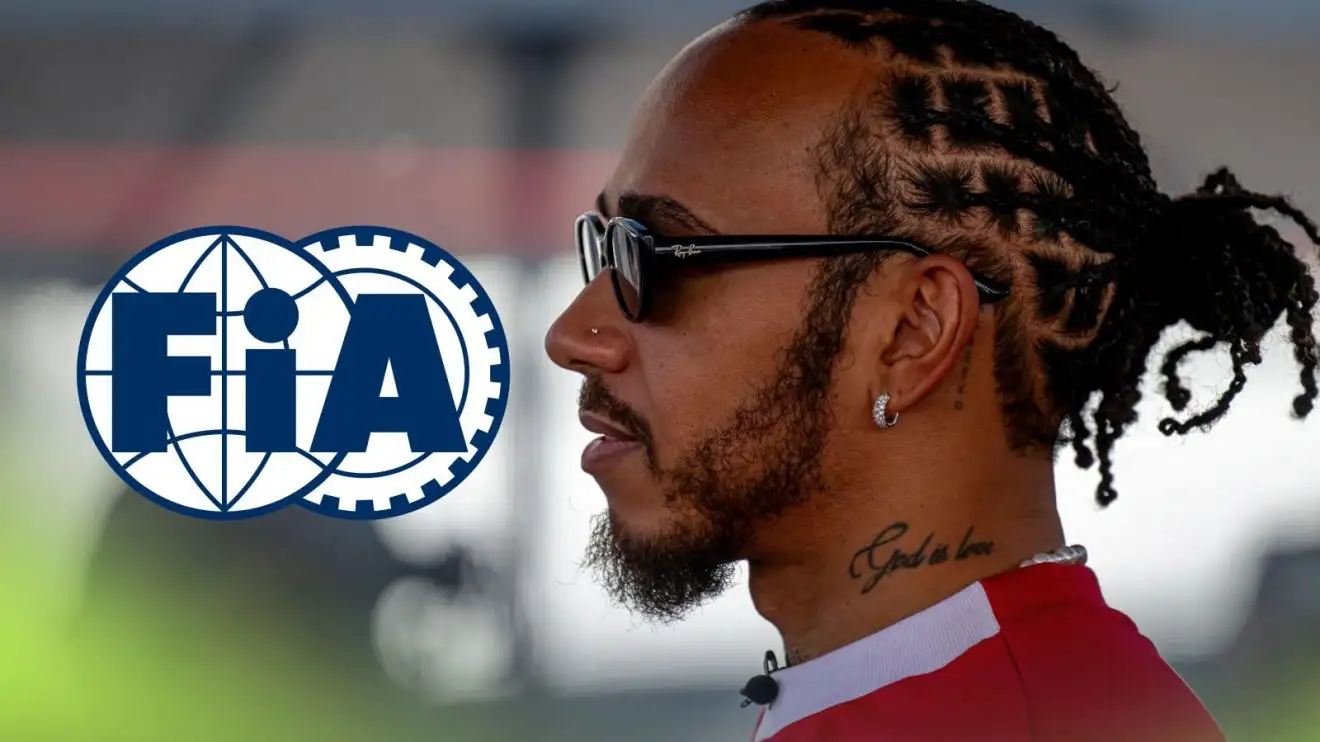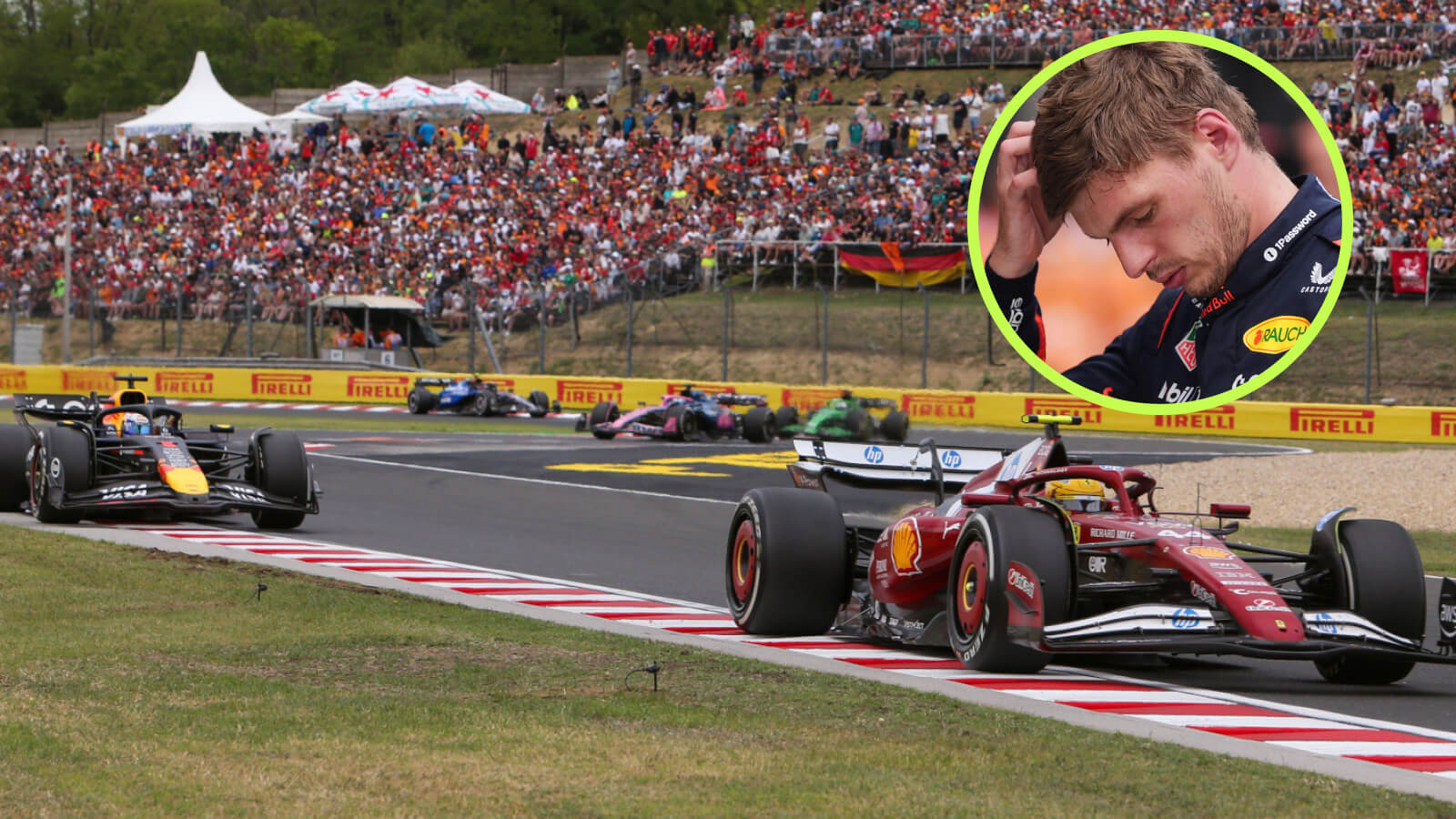The roar of Formula 1 engines often fades quickly, replaced by the cool efficiency of data and strategy, but sometimes a controversy ignites so fiercely that the noise of debate drowns out the speed of the cars.
The recent Mexico Grand Prix was one such event, a race that was less defined by its victor and more by the deeply inconsistent application of the rules, leaving one of the sport’s greatest champions feeling utterly betrayed and an influential voice in the paddock calling for the ultimate deterrent penalty.
The central issue revolves around corner cutting, a perennial headache for race stewards, and the radically different ways similar infringements were judged.
At the heart of the storm is Lewis Hamilton, whose 10-second time penalty for cutting the track was swiftly delivered, contrasting sharply with the ‘no further action’ verdicts for two highly visible and arguably more egregious shortcuts taken by Max Verstappen and Charles Leclerc earlier in the race. The resulting outrage has led to accusations of ‘double standards’ and a crisis of confidence in the FIA’s governing of the sport.

Hamilton’s Plight: The Ten-Second Hammer
The pivotal moment for Lewis Hamilton occurred on lap six. In a classic wheel-to-wheel battle, Hamilton and Max Verstappen were side-by-side through Turn 1 and Turn 2. As they sprinted toward Turn 4, Hamilton attempted an audacious move on the outside of Verstappen. He locked his front right tire, forcing him off the track and onto the grass.
The rulebook, via the Race Director’s event notes, is clear: drivers leaving the track must rejoin safely and, crucially, use the defined escape road to ensure no lasting advantage is gained. Hamilton, however, cut across the track and rejoined in P3. While the stewards did not penalize him for how he rejoined (i.e., not using the escape road), they determined that he had “left the track and gained a lasting advantage.” The verdict: a devastating 10-second time penalty.
The cost was immense. Hamilton was firmly fighting for a podium position, but the penalty relegated him to P8 at the checkered flag. The frustration from the Mercedes garage and, perhaps more vocally, from Ferrari (who were impacted by the eventual track position) was palpable. Ferrari Team Principal Frédéric Vasseur was blunt in his assessment of the management of the whole situation. He highlighted that when taking the “global picture” into account, including Verstappen cutting a chicane earlier, the penalty on Hamilton was “not very well managed honestly.” Vasseur calculated that the 10-second sanction had likely cost them P4 in the standings, a blow they could not recover from in a race where overtaking proved difficult.
Hamilton himself was scathing, his carefully measured public persona momentarily shattered by the perceived injustice. “Ultimately I feel very let down by the governing body,” he stated, adding the critical accusation that has fueled the social media firestorm: “it’s double standards.” The seven-time champion was not merely complaining about a penalty; he was questioning the very integrity of the judicial process.
The Lap One ‘Rallying’ and the Great Escape
The crux of the “double standards” argument lies in the race’s chaotic opening lap. The start of the Grand Prix saw an immediate skirmish at Turn 1, with several drivers taking to the grass in a bid to survive the multi-car fight. Notably, Charles Leclerc and Max Verstappen were key protagonists in this opening lap chaos.
Leclerc, battling Hamilton for P2, was judged to have taken to the grass and emerged with the lead of the race. He eventually gave the position back to Lando Norris but, critically, not to Lewis Hamilton, maintaining his P2 position. For an infringement that clearly gained him track position relative to Hamilton, the stewards took no further action.
Verstappen’s action was even more dramatic. Running three and then four wide down to Turn 1, the champion ended up right on the edge of the track. As he described it, in a moment of almost gleeful self-reporting, he was “following the slipstream three wide four wide” and had to keep moving “left left left.” He recounted “bottoming out on the curb,” leading to a bit of “rallying between turns one and two.” Verstappen took to the grass, rejoined the race in P4, and, like Leclerc, escaped without any penalty whatsoever.
His narrative painted the incident as a chaotic, unavoidable consequence of the start—a hectic moment of survival. However, many observers, including decorated former drivers, saw it as a calculated, deliberate maneuver to maintain momentum and position, facilitated by the known leniency toward first-lap incidents. The stark contrast between this unpunished ‘rallying’ and Hamilton’s lap six 10-second penalty is the lightning rod of the current debate.

Brundle’s Call: The Demand for a Drive-Through Deterrent
The most damning verdict on the stewarding came from F1 veteran and respected commentator Martin Brundle. Speaking on Sky F1’s official podcast, Brundle argued emphatically that both Leclerc and Verstappen should have faced sanctions for their first-lap transgressions.
Regarding Leclerc, Brundle felt the penalty should have been a 10-second time sanction, stating that the Ferrari driver “made an attempt at turn one, didn’t like the look of the way it was shaping up so just ignore turn two.” This suggests a conscious decision to shortcut the corner for an advantage, warranting the same level of punishment Hamilton later received.
However, Brundle reserved his harshest criticism, and his most severe penalty recommendation, for Max Verstappen. The commentator felt that what Verstappen did at the start was so deliberate, so contrary to the spirit of racing, that it warranted a much stronger punishment: a drive-through penalty.
A drive-through is one of the most severe in-race penalties, requiring a driver to pass through the pit lane at the speed limit without stopping for service, costing them a significant chunk of time and track position. Brundle’s reasoning was clear and compelling. He argued that Verstappen “made no effort whatsoever to take turns one, two or three.” Crucially, Brundle saw the move not as an accident but a calculated, opportunistic risk, noting that Verstappen “took the risk on the outside knowing full well he could just bury the throttle and carry on.”
For Brundle, the need for a drive-through wasn’t just about punishment; it was about deterrence. “I might even have given somebody doing what Max did a drive-thru as a proper deterrent to stop the silliness because then it all gets chaotic.” This is the core of the integrity issue: if drivers believe they can gain track position via a shortcut without penalty, the racing surface itself becomes optional, leading to a state of perpetual chaos and injustice for those who “were minding their business actually staying on the racetrack.”

Restoring Trust in the Governance
The fallout from the Mexico Grand Prix is more than just a squabble over a few points. It strikes at the heart of the fairness and credibility of Formula 1’s governing structure. When a driver of Lewis Hamilton’s stature openly accuses the governing body of operating with ‘double standards,’ it signifies a profound breakdown in trust.
The rules surrounding track limits and corner cutting are notoriously difficult to enforce consistently, yet the disparity witnessed in Mexico is difficult to justify. How can a similar or less aggressive track deviation on Lap 6 warrant a 10-second penalty, while a calculated, high-speed bypass of multiple corners on Lap 1 is deemed ‘no further action’?
The key distinction stewards often make is the immediate ‘right of recovery’ or the difficulty of assessing the full advantage gained in a chaotic opening-lap scenario. However, the evidence, as articulated by Brundle, suggests a calculated intent by at least one driver to exploit the situation for a guaranteed gain. By failing to sanction such brazen exploitation with a severe penalty—such as the drive-through—the FIA has inadvertently set a dangerous precedent.
The integrity of the championship demands that the rulebook be applied consistently, proportionally, and without the appearance of favouritism. If the governing body cannot reconcile the clear and massive difference in the handling of the Hamilton, Leclerc, and Verstappen incidents, the feeling of being “let down” will only spread, threatening to erode the faith fans and competitors have in the sport’s judicial process. The fans are now left to ponder whether the stewards’ decision-making is truly about fairness, or if a certain amount of ‘rallying’ is simply considered part of the show, provided the driver is skilled enough to pull it off.